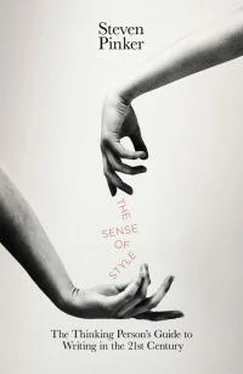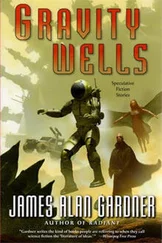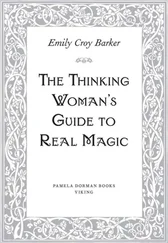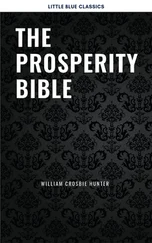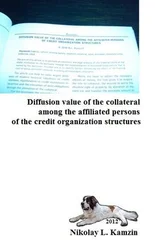The data point to increasing benefits with lower and lower LDL levels, said Dr. Daniel J. Rader. [Is this sentence about a data point? No, it’s about data which point to something.]
But the Supreme Court’s ruling on the health care law last year, while upholding it, allowed states to choose whether to expand Medicaid. Those that opted not to leave about eight million uninsured people who live in poverty without any assistance at all. [Opted not to leave? No, opted not to expand.]
Garden paths can turn the experience of reading from an effortless glide through a sentence to a tedious two-step of little backtracks. The curse of knowledge hides them from the writer, who therefore must put some effort into spotting and extirpating them. Fortunately, garden-pathing is a major research topic in psycholinguistics, so we know what to look for. Experimenters have recorded readers’ eye movements and brainwaves as they work their way through sentences, and have identified both the major lures that lead readers astray and the helpful signposts that guide them in the right direction. 28
Prosody. Most garden paths exist only on the printed page. In speech, the prosody of a sentence (its melody, rhythm, and pausing) eliminates any possibility of the hearer taking a wrong turn: The man who HUNTS … ducks out on weekends; The PRIME … number few. That’s one of the reasons a writer should mutter, mumble, or orate a draft of his prose to himself, ideally after enough time has elapsed that it is no longer familiar. He may find himself trapped in his own garden paths.
Punctuation. A second obvious way to avoid garden paths is to punctuate a sentence properly. Punctuation, together with other graphical indicators such as italics, capitalization, and spacing, developed over the history of printed language to do two things. One is to provide the reader with hints about prosody, thus bringing writing a bit closer to speech. The other is to provide her with hints about the major divisions of the sentence into phrases, thus eliminating some of the ambiguity in how to build the tree. Literate readers rely on punctuation to guide them through a sentence, and mastering the basics is a nonnegotiable requirement for anyone who writes.
Many of the silliest ambiguities in the Internet memes come from newspaper headlines and magazine tag lines precisely because they have been stripped of all punctuation. Two of my favorites are MAN EATING PIRANHA MISTAKENLY SOLD AS PET FISH and RACHAEL RAY FINDS INSPIRATION IN COOKING HER FAMILY AND HER DOG. The first is missing the hyphen that bolts together the pieces of the compound word that was supposed to remind readers of the problem with piranhas, man-eating . The second is missing the commas that delimit the phrases making up the list of inspirations: cooking, her family, and her dog .
Generous punctuation would also take the fun out of some of the psycholinguists’ garden path sentences, such as When Fred eats food gets thrown. And the press release on Sex Week at Yale would have been easier to parse had the student authors spent less time studying the history of the vibrator and more time learning how to punctuate. (Why is the history of romance a transgender issue? What are the secrets of how to be a student panel?)
Unfortunately, even the most punctilious punctuation is not informative enough to eliminate all garden paths. Modern punctuation has a grammar of its own, which corresponds neither to the pauses in speech nor to the boundaries in syntax. 29It would be nice, for example, if we could clear things up by writing Fat people eat, accumulates, or I convinced her, children are noisy. But as we shall see in chapter 6, using a comma to separate a subject from its predicate or a verb from one of its complements is among the most grievous sins of mispunctuation. You can get away with it when the need for disambiguation becomes an emergency, as in George Bernard Shaw’s remark “He who can, does; he who cannot, teaches” (and in Woody Allen’s addendum “And he who cannot teach, teaches gym”). But in general the divisions between the major parts of a clause, such as subject and predicate, are comma-free zones, no matter how complex the syntax.
Words that signal syntactic structure. Another way to prevent garden paths is to give some respect to the apparently needless little words which don’t contribute much to the meaning of a sentence and are in danger of ending up on the cutting-room floor, but which can earn their keep by marking the beginnings of phrases. Foremost among them are the subordinator that and relative pronouns like which and who, which can signal the beginning of a relative clause. In some phrases, these are “needless words” that can be deleted, as in the man [whom] I love and things [that] my father said, sometimes taking is or are with them, as in A house [which is] divided against itself cannot stand. The deletions are tempting to a writer because they tighten up a sentence’s rhythm and avoid the ugly sibilance of which . But if the which- hunt is prosecuted too zealously, it may leave behind a garden path. Many of the textbook examples become intelligible when the little words are restored: The horse which was raced past the barn fell; Fat which people eat accumulates.
Oddly enough, one of the most easily overlooked disambiguating words in English is the most frequent word in the language: the lowly definite article the . The meaning of the is not easy to state (we’ll get to it in the next chapter), but it could not be a clearer marker of syntax: when a reader encounters it, she has indubitably entered a noun phrase. The definite article can be omitted before many nouns, but the result can feel claustrophobic, as if noun phrases keep bumping into you without warning:
If selection pressure on a trait is strong, then alleles of large effect are likely to be common, but if selection pressure is weak, then existing genetic variation is unlikely to include alleles of large effect.
If
the
selection pressure on a trait is strong, then alleles of large effect are likely to be common, but if
the
selection pressure is weak, then
the
existing genetic variation is unlikely to include alleles of large effect.
Mr. Zimmerman talked to police repeatedly and willingly.
Mr. Zimmerman talked to
the
police repeatedly and willingly.
This feeling that a definite noun phrase without the does not properly announce itself may underlie the advice of many writers and editors to avoid the journalese construction on the left below (sometimes called the false title) and introduce the noun phrase with a dignified the, even if it is semantically unnecessary:
People who have been interviewed on the show include novelist Zadie Smith and cellist Yo-Yo Ma.
People who have been interviewed on the show include
the
novelist Zadie Smith and
the
cellist Yo-Yo Ma.
As linguist Geoffrey Pullum has noted, sometimes the passive voice is necessary.
As
the
linguist Geoffrey Pullum has noted, sometimes the passive voice is necessary.
Though academic prose is often stuffed with needless words, there is also a suffocating style of technical writing in which the little words like the, are , and that have been squeezed out. Restoring them gives the reader some breathing space, because the words guide her into the appropriate phrase and she can attend to the meaning of the content words without simultaneously having to figure out what kind of phrase she is in:
Evidence is accumulating that most previous publications claiming genetic associations with behavioral traits are false positives, or at best vast overestimates of true effect sizes.
Читать дальше
